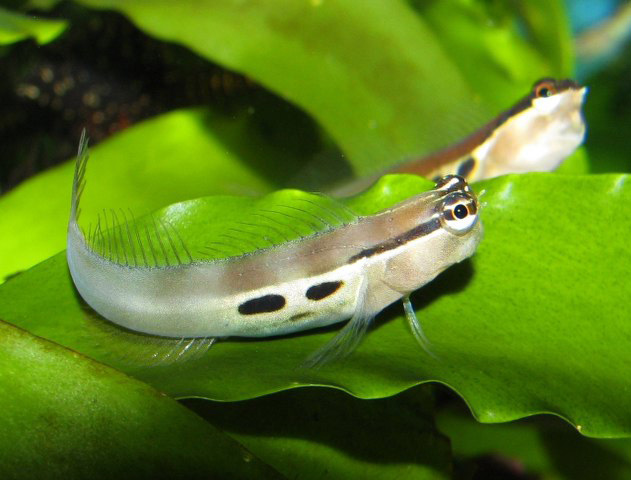| Blenniidae (Combtooth blennies), subfamily: Salariinae |
| 4.5 cm TL (male/unsexed); 2.7 cm SL (female) |
|
reef-associated; marine; depth range 1 - 15 m |
| Western Pacific: known only from the Philippines and the adjacent northeast Borneo (Sabah), Malaysia. |
|
Very similar to Ecsenius cf bandanus, but readily identified by the double black spots on the abdominal region (Ref. 48636). |
| Adults occur on reef crests and slopes with rich coral growth to a depth of about 15 m (Ref. 48636). Often solitary and around sponges and tunicates (Ref. 90102). Oviparous. Eggs are demersal and adhesive (Ref. 205), and are attached to the substrate via a filamentous, adhesive pad or pedestal (Ref. 94114). Larvae are planktonic, often found in shallow, coastal waters (Ref. 94114). |
|
Least Concern (LC); Date assessed: 24 March 2009 Ref. (130435)
|
| harmless |
Source and more info: www.fishbase.org. For personal, classroom, and other internal use only. Not for publication.
